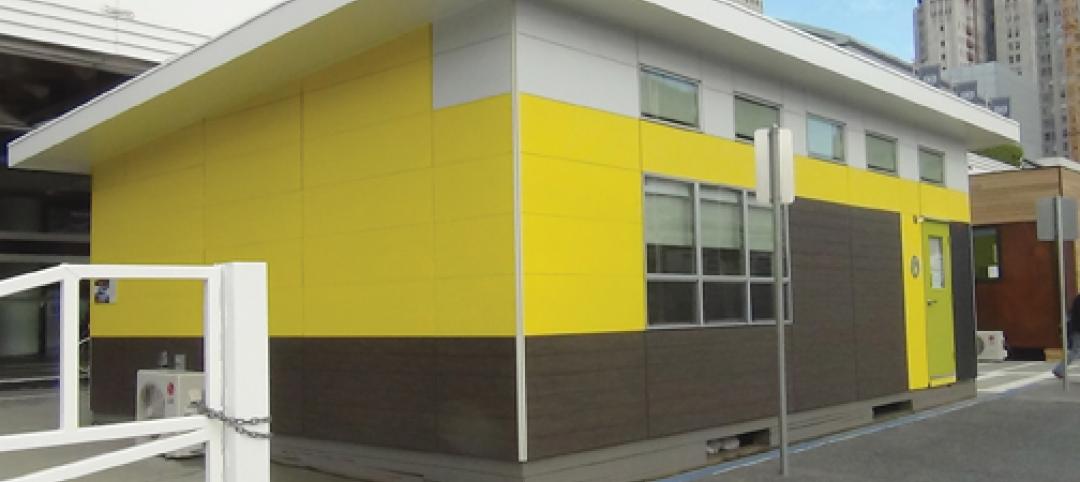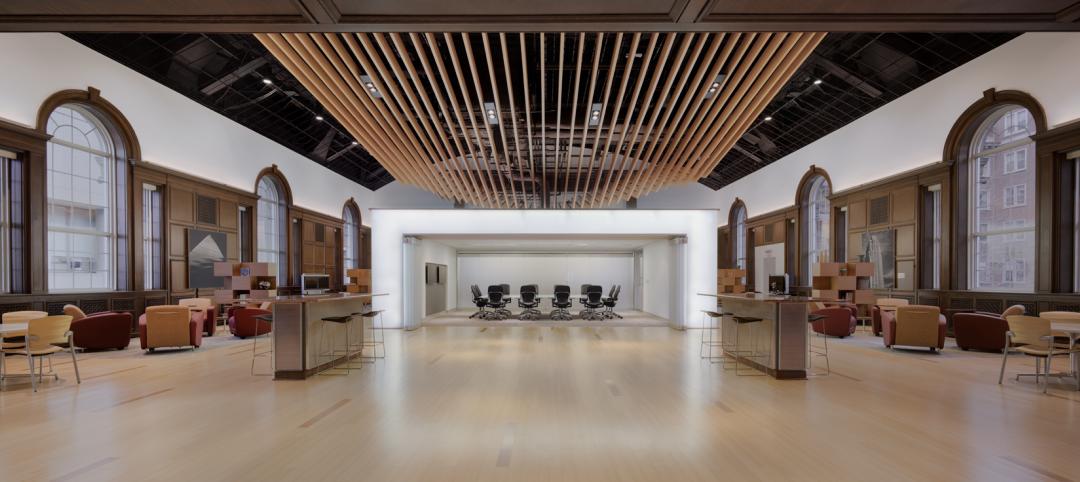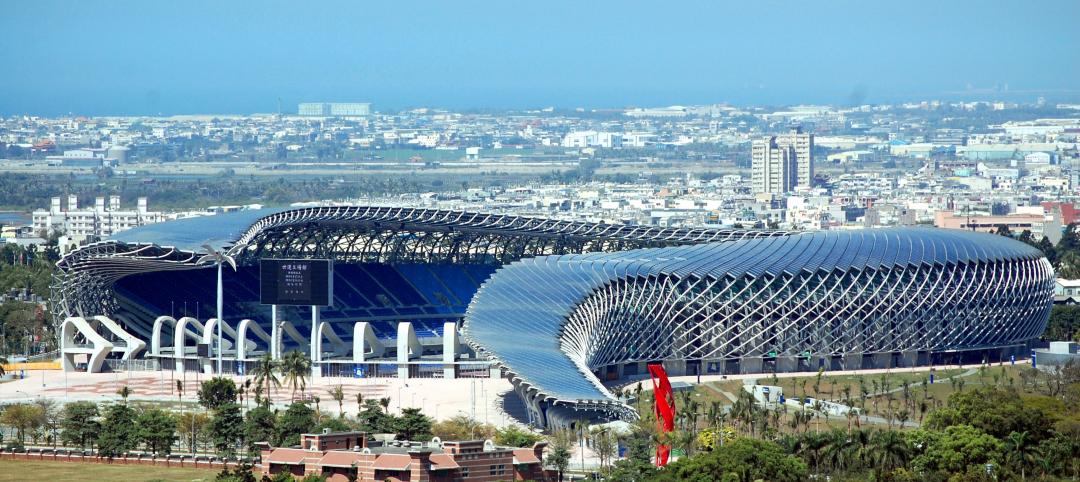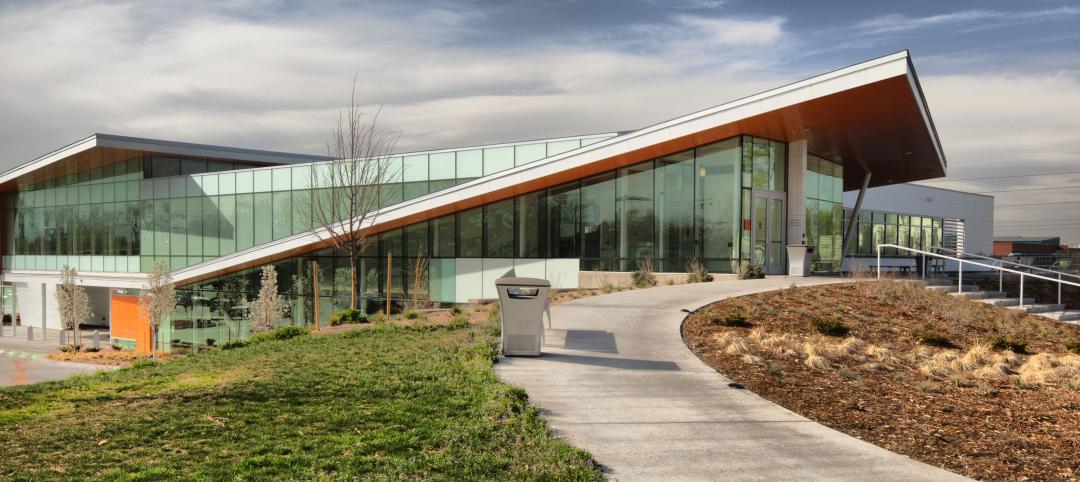A Soviet-era parking garage in Lithuania that sits just a few dozen feet from the Neris River and has been described as an “eyesore,” has been transformed into a bright display of color and lights as part of the Vilnius Street Art Festival. Ignas Lukauskas, an architect whose PhD thesis was on urban landscapes and how art and architecture can create disruptions, created the new look for the building.
The Vilnius Waterfall, as the project has been dubbed, is based on this thesis. The photorealistic waterfall image was pasted onto more than 2,000 sm (making it the largest project like this ever executed in Lithuania) of the structure’s exterior surface and uses the building’s terraced look and its location near the Neris to further enhance the faux waterfall’s illusion.
The water appears to crash and cascade down the various terraces of the structure, which is currently used as a garage for storing and maintaining Parliament vehicles, on its way to the river. The stagnant appearance offered by the building’s former look is replaced with one that is dynamic and flowing.
The new façade is only temporary, but the goal is for it to bring a refreshing hint of the natural landscape to Lithuania’s capital city.
View more images of The Vilnius Waterfall here.
Related Stories
| Dec 9, 2012
Modular classroom building makes the grade
SAGE modular classroom opens eyes, minds at Greenbuild 2012.
| Dec 9, 2012
14 great solutions
Welcome to the third installment of Building Design+Construction’s “Great Solutions,” highlighting 14 innovative technologies and products that you can put to work in your next project.
| Dec 9, 2012
AEC professionals cautiously optimistic about commercial construction in ’13
Most economists say the U.S. is slowly emerging from the Great Recession, a view that was confirmed to some extent by an exclusive survey of 498 BD+C subscribers whose views we sought on the commercial construction industry’s outlook on business prospects for 2013.
| Dec 7, 2012
Structural glazing sealant protects solar-rooftop stadium in Taiwan
Designers of the Kaohsiung World Games Main Stadium in Gaoxiong, Taiwan, powered by almost 9,000 rooftop solar panels, required an effective panel fixing design offering optimum energy transfer rate, plus thermal and weathertight performance. Dow Corning specialists recommended a four-sided structural sealant solution featuring Dow Corning 983 Structural Glazing Sealant.
| Dec 6, 2012
Ziegler Cooper names Soto as Director of Design, Broadens Design Capabilities
Soto will oversee design efforts, bringing a high level of quality and problem solving capabilities through active engagement with clients and studios firm wide.
| Dec 5, 2012
Gilbane publishes Winter 2012 construction economic report
Report outlines impact of recent events; predicts continued movement, while slow, toward recovery.
| Dec 5, 2012
Gehry-designed New York City tower receives Emporis Skyscraper Award
8 Spruce Street is now the third New York tower to win the Emporis Skyscraper Award.
| Dec 4, 2012
MKK’s Denver Human Services Eastside Building wins ACEC Excellence Award
MKK provided mechanical, plumbing and fire protection consulting services on this LEED-NC Gold project.
| Dec 4, 2012
Thornton Tomasetti opens new office in São Paulo, Brazil
The move to São Paulo is strategic and timely, as the country continues preparations for the 2014 World Cup and 2016 Olympic Games in Rio de Janeiro.















